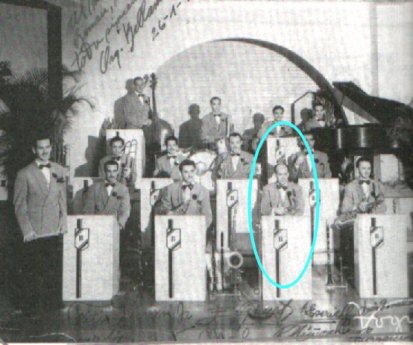11.12.1 Armando Romeu González.

Armando Romeu González, Cuban flautist, saxophonist, orchestrator, and conductor, was born on July 17, 1911, in Havana. He was descended from a family of prominent Cuban musicians. He studied music with his father, Armando Romeu Marrero, and also with Alfredo Brito and Antonio Arcaño.
At the age of eight, he was already a member of the military band of the overseas town of Regla as the first piccolo player. In 1924, he performed at the Jockey Club with American Ted Naddy’s orchestra. He later worked as a saxophonist at the Céspedes cinema with pianist Nacho Alemany, and at the National Casino with Earl Carpenter’s band.
Between 1929 and 1930, Armando Romeu worked with the Hermanos Palau orchestra, the Froilán Maya-led Diplomats orchestra, and Alfredo Brito’s Siboney orchestra. He visited Spain with the Siboney orchestra in 1932, along with the Matamoros Trio. The Siboney orchestra performed in Paris, France, and ended its tour in Lisbon, Portugal.
Upon his return to Cuba in November 1932, Romeu founded his own orchestra, with which he made his debut at the Edén Concert, with Rita Montaner and the rumberos René and Estela, this orchestra would disband shortly after.
When he created his second orchestra, Armando Romeu performed for the first time at the Mitsouko Cabaret. The musicians who made up the band on this occasion were: Luis Escalante, Antonio and Julio Temprano, A. Gelabert, Amado Valdés, Emilio Peñalver, Jesús Pía, Alberto Jiménez Rebollar, Ernesto Romeu, Merito Reyes, and Juan Castro.
In 1936, the orchestra, which performed primarily at the Hotel Nacional (Hotel Nacional (Calle O esq. 21, Vedado. Plaza de la Revolución. City of Havana) began a tour of South America, starting in Lima, Peru; they later traveled to Santiago de Chile, and the tour continued in 1937 to Buenos Aires, Argentina.
In Argentina, the orchestra disbanded, and Romeu went on to play tenor saxophone with Paul Wyer’s Jazz Band. Shortly after, he returned to Cuba, where he joined the Casino de la Playa orchestra.
In 1940, trumpeter Luis Escalante and Armando Romeu founded the Bellamar Orchestra, with which they debuted at the Sans-Souci cabaret. When the cabaret closed, the Bellamar disbanded. Romeu founded a new group, which performed from 1942 to 1967 at the Tropicana Cabaret (4504 Calle 72, Marianao, Havana).
Armando Romeu, in 1967, was one of the founders and director of the Cuban Modern Music Orchestra, whose members were Chucho Valdés, piano; Arturo Sandoval and Jorge Varona, trumpets; Paquito D’Rivera, saxophone; Oscarito Valdés, singer and percussionist; Carlos Emilio Morales, guitar; Enrique Plá, drums; and Guillermo Barreto, timpani.
He was the director of the Santa Clara Modern Music Orchestra. He was a music teacher in Nicaragua and the former USSR. With pianist Frank Emilio, he developed a method for teaching sighted composers to write for blind musicians, and a new Braille notation system for teaching harmonic structures.
He died on March 11, 2002 in Havana, at the age of 90, the victim of a heart attack.
Armando Romeu was one of the founding figures of Cuban music. A renowned and admired Cuban musician, he held several awards at his death, including the Félix Varela Order of the First Degree, one of the highest awards granted by the Cuban State to distinguished figures in the sphere of culture and the arts.








